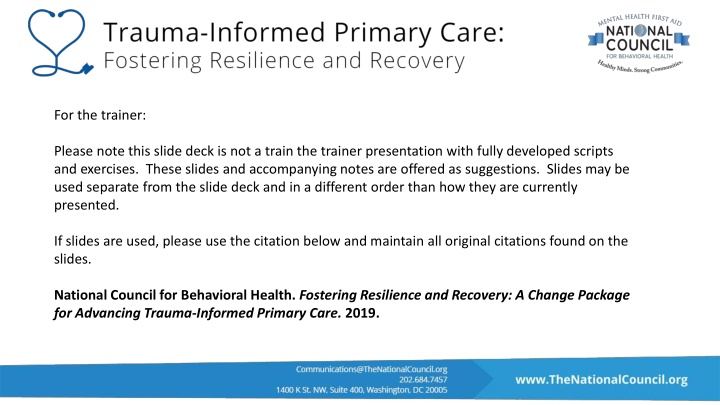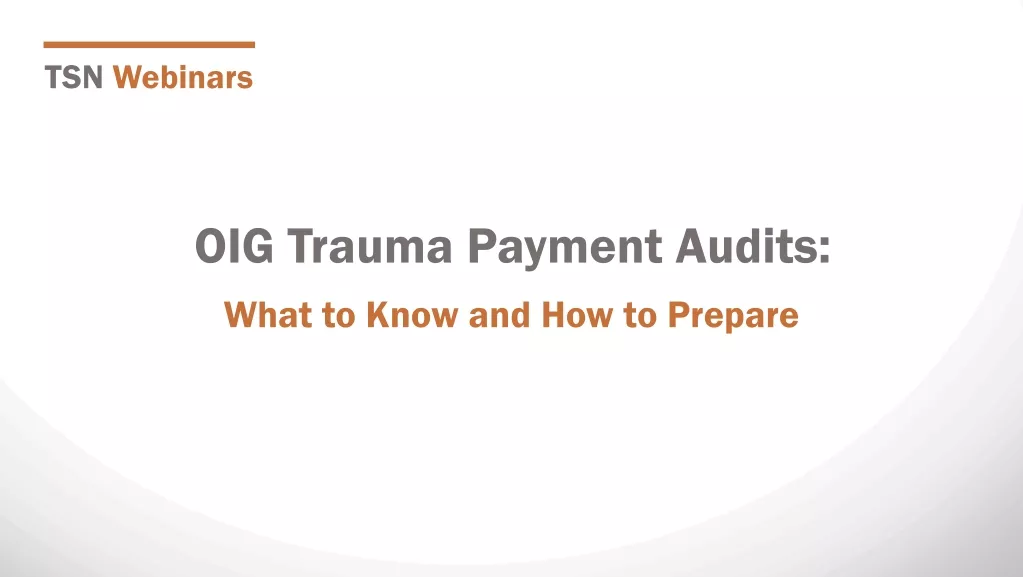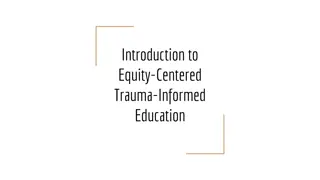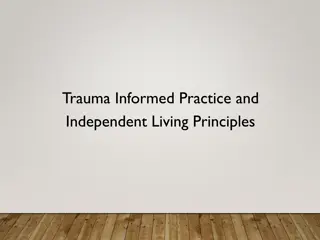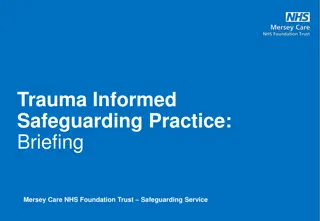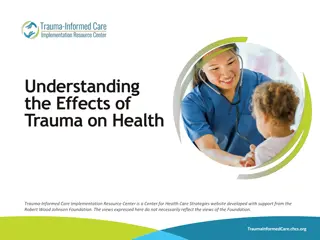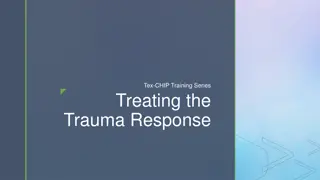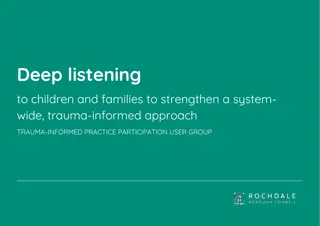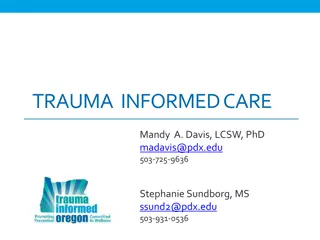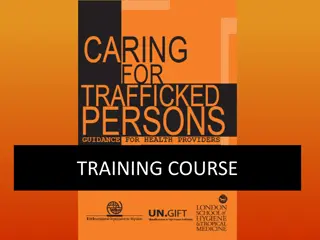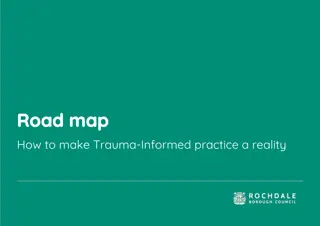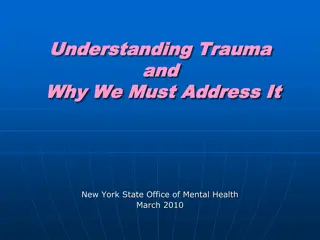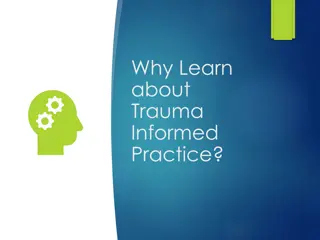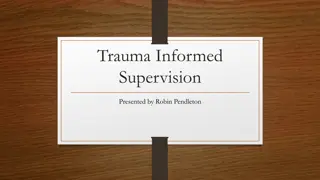Enhancing Family Engagement in Trauma-Informed Primary Care
Explore strategies for engaging families and support networks in trauma-informed primary care settings, focusing on giving them a voice, building connections, and incorporating feedback into formal systems. Tips for sharing information effectively and steps to enhance engagement are also discussed.
Download Presentation

Please find below an Image/Link to download the presentation.
The content on the website is provided AS IS for your information and personal use only. It may not be sold, licensed, or shared on other websites without obtaining consent from the author.If you encounter any issues during the download, it is possible that the publisher has removed the file from their server.
You are allowed to download the files provided on this website for personal or commercial use, subject to the condition that they are used lawfully. All files are the property of their respective owners.
The content on the website is provided AS IS for your information and personal use only. It may not be sold, licensed, or shared on other websites without obtaining consent from the author.
E N D
Presentation Transcript
For the trainer: Please note this slide deck is not a train the trainer presentation with fully developed scripts and exercises. These slides and accompanying notes are offered as suggestions. Slides may be used separate from the slide deck and in a different order than how they are currently presented. If slides are used, please use the citation below and maintain all original citations found on the slides. National Council for Behavioral Health. Fostering Resilience and Recovery: A Change Package for Advancing Trauma-Informed Primary Care. 2019.
Engaging Families and Support Networks
Overview Who, Why, How, When and Where What Does this Mean in a Trauma- informed Primary Care Organization Identify Ways to Engage Families and Support Networks
Family and Support Networks Having a Voice Finding a Connection Building Bridges Navigating Systems
Where Can We Include their Voices Patient Centered Care including planning, health behavior change, etc. Policy and procedures committees Key standing committees Task forces Workgroups New staff interviewing and hiring panels Councils Advisory and agency boards
How Do We Use the Voice Direct services with client Advocacy Welcoming and orienting new patients/families to the organization Involvement in orientation and training Bring their voice to the table with your partners
Formal Systems Purpose: Continuously gathering family and support network feedback Identify problem areas Make improvements as needed Support your efforts to listen to your patient
Tips for Sharing Information People may not give you useful feedback unless: 1. You make it easy for them 2. You make it comfortable for them 3. You focus on the serviceattributes most important to them
Step 1: Who? Anyone who the patient identifies as family, whether biological or not Anyone who provides support to the patient Anyone who the patient is willing to provide consent for the provider to involve in care
Step 2: Psychoeducation Trauma and its impact Client diagnosis psychoeducation How can family or support network be helpful in the health change behavior process
Step 3: DiscussDetermineDocument Discuss and document provider and patient s determination related to HIPAA
Step 4: Acknowledgements Recognize that the person is likely a volunteer and look for ways to appreciate their value
Step 5: Maintain Communication Maintain an open and transparent dialogue with the family or support network about their comfort in inclusion in the treatment team and what they need to feel safe and open in the process.
